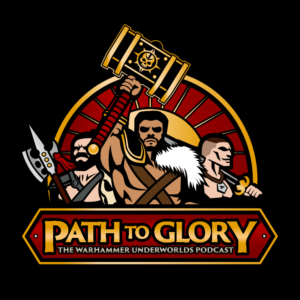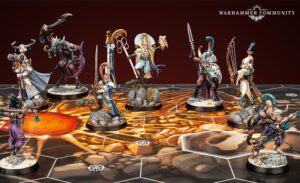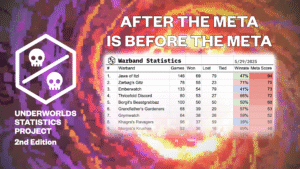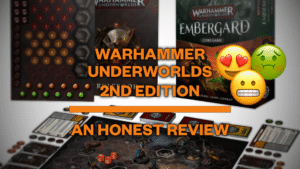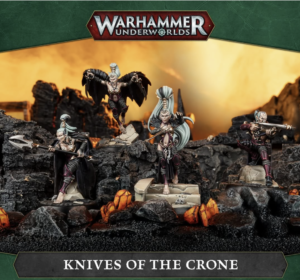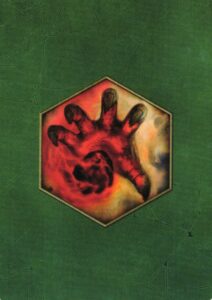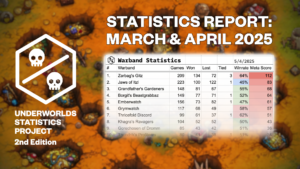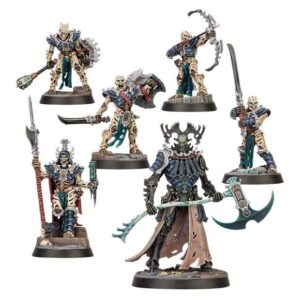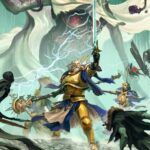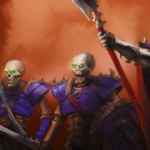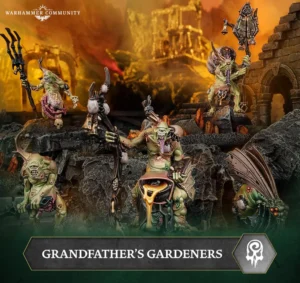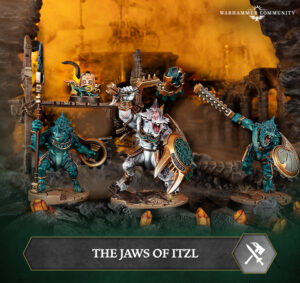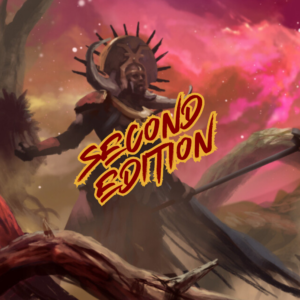Preamble
Before we get started with this review, I wanted to give a quick summary on how we are “grading” warband releases in the new edition. I will copy/paste this into both warband articles for this release series for reference, so feel free to skip over this section if you’ve already read it in the other post!
With the myriad of items being released as Warhammer Underworlds begins its second edition, we have a lot of changes that have not only affected how we play the game, but also how we write review articles! The most notable thing, as it pertains to warband reviews, is the lack of a faction Rivals deck (which I am a bit sad about). However, these have been replaced by warscrolls instead, which detail the abilities unique to the particular warband you are using. While my card ranking system will be mostly the same for the universal Rivals decks (cards which are duplicated from one deck to another will just receive the copy/paste treatment), warscrolls will receive a similar treatment to fighter cards in that I will simply discuss my feelings on them in text, rather than giving them any kind of numerical grades. Additionally, because almost everything interesting about a warband comes on their warscroll, I’ll be covering that prior to jumping in on the fighters.
Intro
For this article, we’ll be covering the Emberwatch, the newest Stormcast warband to grace us with their presence in the Underworlds. While it’s no secret that I am not much of a Stormcast advocate, I think fans of them will be happy to see that this warband looks like it’s got some competitive legs. Of the two warbands in the core set, I personally feel like these guys got the better half of the deal in terms of power level, but let’s jump into their mechanics and see if you all agree!
Warscroll

Inspire Condition
Each member of the warband shares the same inspire condition, which is after an Action step in which that fighter resolved a core ability, if they started that Action step in enemy territory. While the most obvious way you might push this early is through leveraging the charged out rule to inspire one of your fighters (charge 3X, then choose to resolve a core ability for one of your fighters in enemy territory), we will see other ways you can potentially set this up. In particular, cards and/or abilities which enable you to teleport fighters into enemy territory will be extremely potent for this warband, not only for their innate powerful effects but also for building in redundancy to support your inspiration condition. While, in a vacuum, you might look at this inspiration as a bit difficult to manage and also somewhat playstyle-defining, I think the mark of good Emberwatch players will be crafting decks to support that inspiration without overcommitting into counterpunch warbands. Similarly, the fact that the only requirement is that the fighter be in enemy territory at the start of the Action step means you can also set up some cute inspirations where you actually Move or Charge out of enemy territory, allowing you to potentially disengage while still accessing your (mostly desirable) inspired profiles. Certainly not the easiest inspiration condition, but should be pretty manageable, especially given the ability to target inspirations for 1 or 2 fighters you really want to get going early in the game.
Alone I Stand!
The warband’s only reusable ability, Alone I Stand! gives you a situational push after the last power step of a round. You can pick a friendly fighter in a different territory to each other friendly fighter and push them 1 hex such that they do not land adjacent to another friendly fighter. While there are a number of conditionals here, I think this will likely prove more useful than first meets the eye. While we’re obviously no longer in the first edition, I’d expect the general idea of having more pushes always being a good thing to translate to this edition as well. The potential to push onto a token or even into a territory to secure end phase scoring (or perhaps deny it from your opponent) rings out as the best uses of the ability, but sometimes even just pushing yourself that extra one hex from neutral into enemy territory can set up a big inspire at the beginning of the next round. Yes, you may not always get to make use of this and be in the correct position to support your end phase scoring, but knowing you have this option available to you means you can play around it during the round or even use it as insurance to secure that positional score. If I need to be holding a particular objective and I know my opponent can’t do enough damage to take that fighter off the table, positioning my other fighter(s) so that I have the push available can often mean that even my opponent making the denial play of driving me off the token is insufficient to deny my scoring. While it stinks that it seems you can’t use it when you are truly alone (i.e., when you have only one surviving friendly fighter), I think the odds are good that you’ll get to drop this approximately twice a game and have it feel good, or, at minimum, feel it’s impact as a potential redundancy option at the end of a round.
Vanguard Dash
Our first once-per-game ability, Vanguard Dash allows you to teleport any friendly fighter after your Action step to any edge hex on the board. While it is unfortunate that you have to telegraph it and give your opponent a chance to react, I think the power level of this far outweighs that downside. Not only are there no conditions on who is eligible for the teleport, but not gaining any kind of token afterwards is phenomenal flexibility. Nobody is safe from a potential charge as long as you are able to survive your opponent’s next turn. The most obvious use case here would be to set up an early inspiration, but there’s definitely still value here in other applications. For instance, it can synergize quite nicely with Alone I Stand! either by setting up the push for a different fighter or leveraging the push on the fighter you teleport. If you angle for more of a “Flex” playstyle with this warband, placing tokens within 1 hex of an edge hex during deployment can allow you to double dip towards the end of a round, teleporting into an edge hex then pushing onto the token to secure your scoring. While I think you’ll often get closest to peak value by using this for the aforementioned early inspire, this is the kind of tool any warband would be clamoring to add to their kit and is, in my opinion, the best once-per-game warscroll ability we’ve seen in the core set by a significant margin.
Deadly Sentries
While not quite as potent as our last entry, Deadly Sentries gives you some nice “surprise” threat range while also enabling some more positional play by granting you +1 Range on your attack. Since they have changed up a bit where there are opportunities to use abilities during an attack (man, if only there were some kind of picture or diagram that could show all of those points…), it is important to point out that you pick your weapon before you check range to a target. All that to say, that this ability works exactly how you want it to, which is a good thing. Need that extra hex to attack without charging? You got it. Want to make a charge at that fighter who’s just barely out of your threat range? Go for it. While I think that you’ll largely want to use this to bump your Range 1 to Range 2, taking an extra-far shot is a perfectly good use case in the right situation. That 1 hex may not seem like much, but it will open up some solid positional play for the warband. If adding to your Range doesn’t feel like a super interesting effect, try thinking about it as an extra push, as it will often have about an equivalent effect (with slightly reduced flexibility).
The Raptors of Sigmar
Our last once-per-game ability, The Raptors of Sigmar allows you to finish off a fighter after your attack leaves them vulnerable. Pretty straightforward, but obviously pretty powerful. We just came out of a first edition meta where this kind of play line was very prevalent (attack-ping-kill), and for good reason. While this one is obviously more conditional, always having it “in-hand” and the ability to use it at any range makes it another really solid tool on the warscroll. As an aside, I should also note that it seems like the direction they are leaning with new ping cards is to have them be relatively situational and/or not eligible to be used on vulnerable fighters, so that’s an additional boon here, very good ability.
Fighters
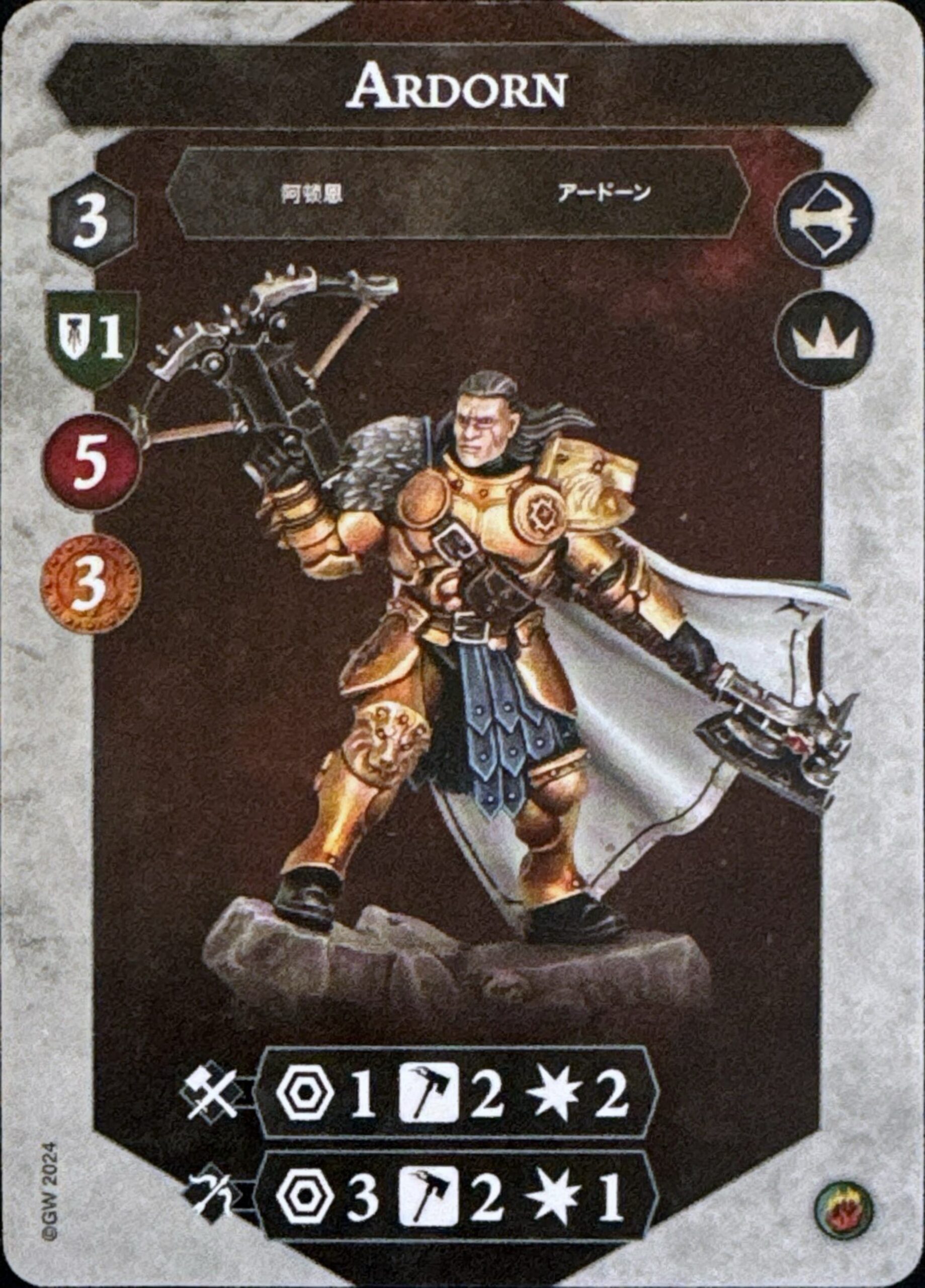
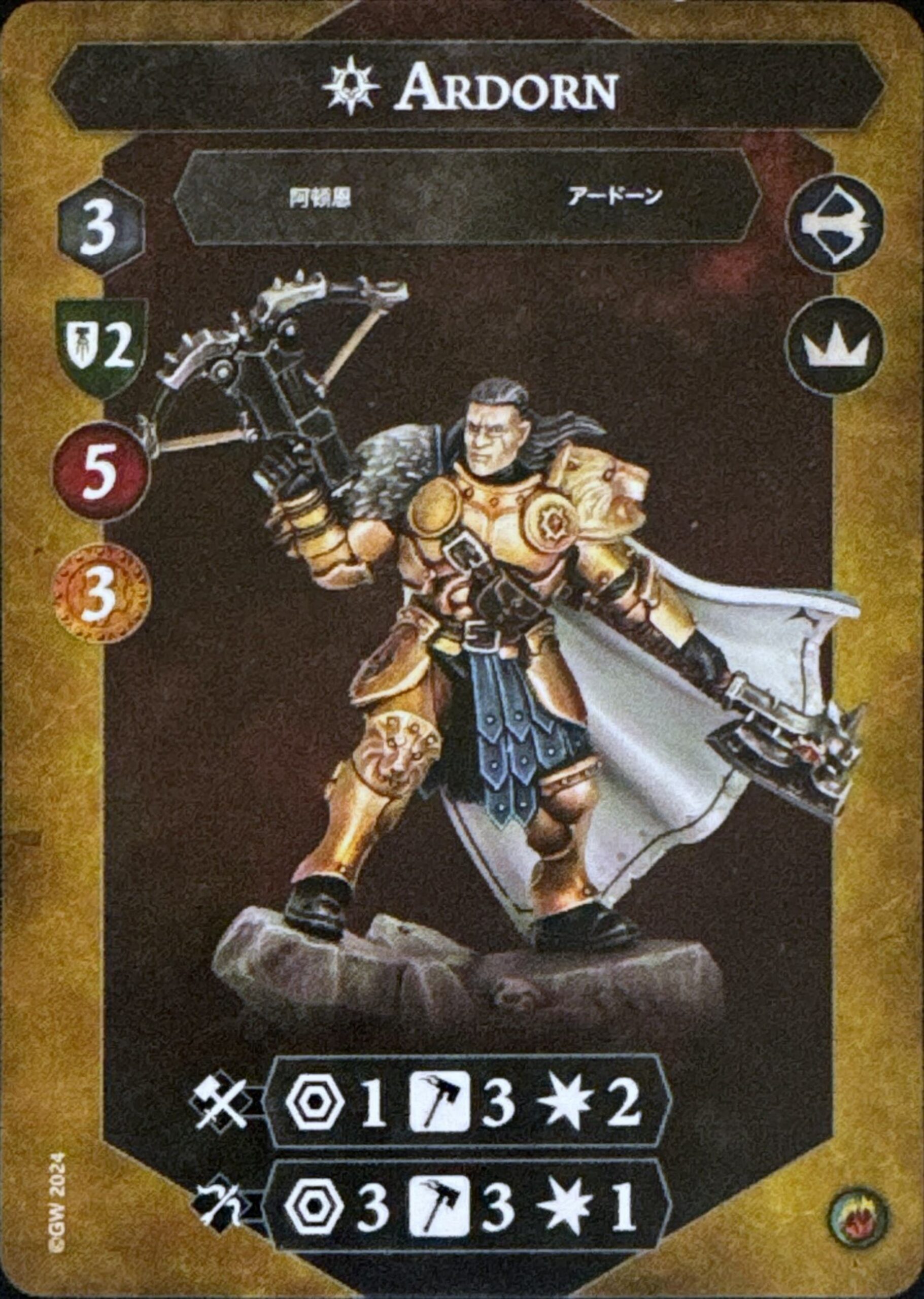
First up, we have the leader: Ardorn Flamerunner. He’s got a pretty solid physical profile at 3 Move, 1 Shield, 5 Health, notably indicating a paradigm shift in Stormcast bulk with the new edition, as the only one to previously hit 5 Wounds in the first edition was inspired Domitan. He has two weapons at his disposal, the first a pretty standard 1R/2H/2D and the other (also seemingly pretty standard) at 3R/2H/1D. Nothing to write home about necessarily, but perfectly serviceable attacks and having access to the Range 3 plays very nice with the charged out rule, as we’ve seen in the past. It’s also worth keeping in mind that you do have Deadly Sentries in your back pocket to augment these statistics once per game. Speaking of augmenting statistics, when inspired, he gains quite a bit, adding a die to each of his weapons and his Save roll. While it would also have been nice to get a bump to 3 Damage, the combination of accuracy and bulk definitely makes Ardorn one of your priority inspiration candidates (perhaps via a Vanguard Dash?). He does give up 3 Bounty as a result of the restructuring, but he does have a bit of an edge in staying power when compared to his 3-Bounty box counterpart in Zikkit, so definitely a solid piece.

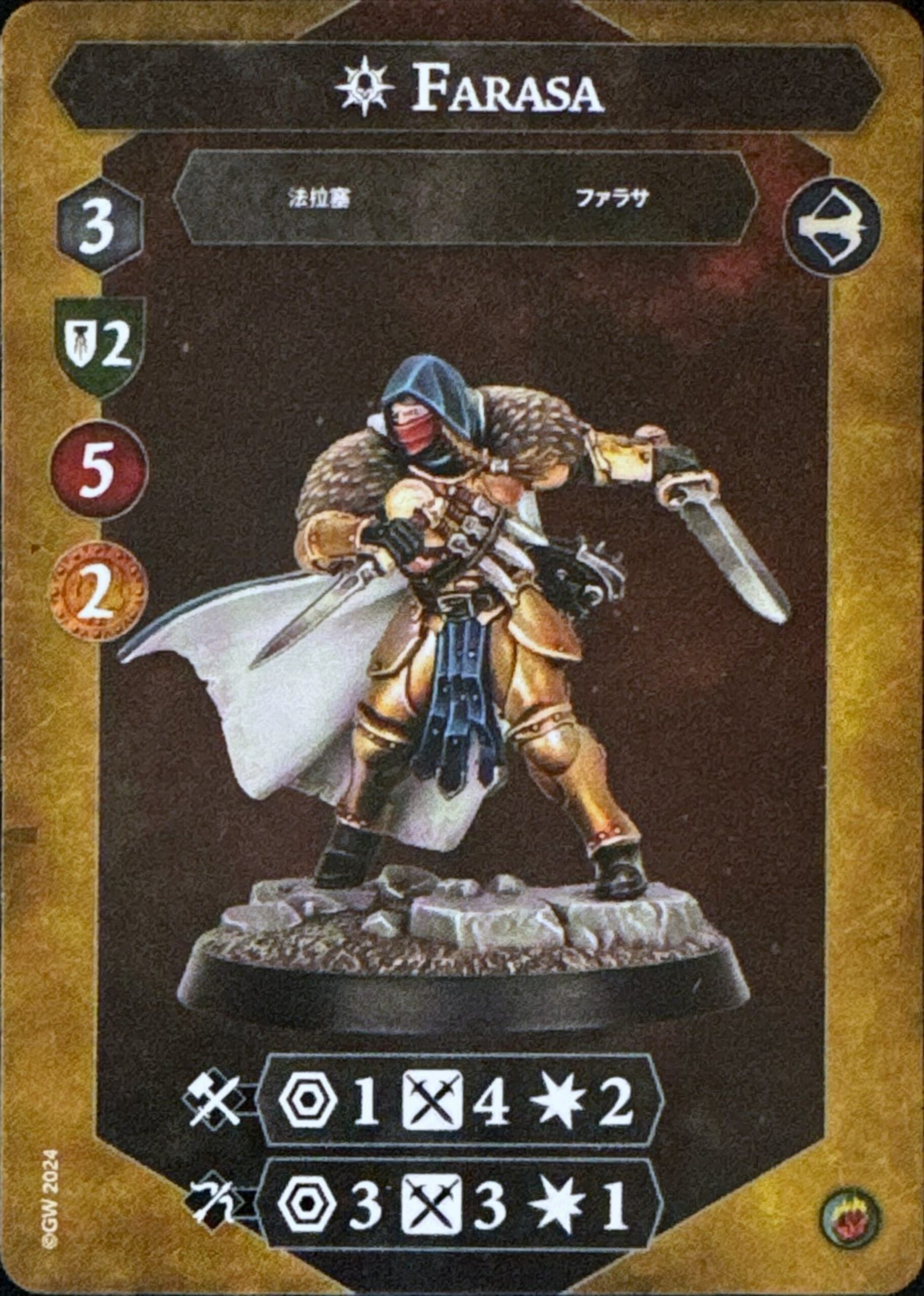
Next we have Farasa Twice-Risen, my personal favorite model in the warband. She sports the same physical profile as Ardorn at 3 Move, 1 Shield, 5 Health, as well as very similar weapons with a 1R/3S/2D and 3R/2H/1D. While she also inspires to gain that extra die on her Save roll, she’s less accurate on her Range 3 (in a vacuum), swapping from 2H to 3S. She does gain an extra die on her Range 1 as well, so she definitely nets out on the inspire, but overall is kind of just a slightly worse version of your leader. If you can get down some upgrade for critical effects (such as grievous), there might be a bit of an edge there, but I’m definitely prioritizing the leader inspire over hers. At least her Bounty characteristic of 2 is reflective of her decrease in effectiveness, I just would have liked to see her distinguish herself more in terms of gameplay.
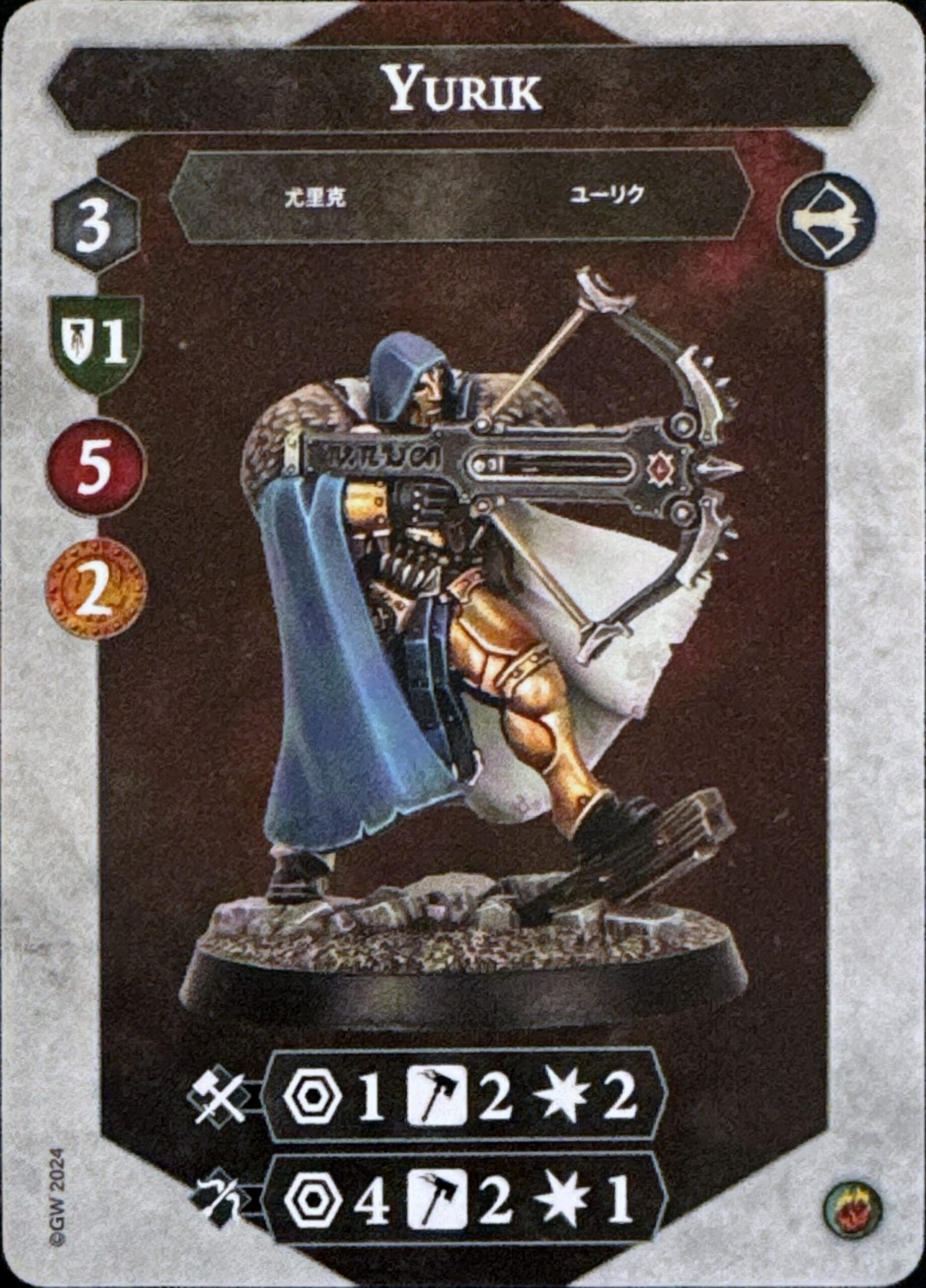
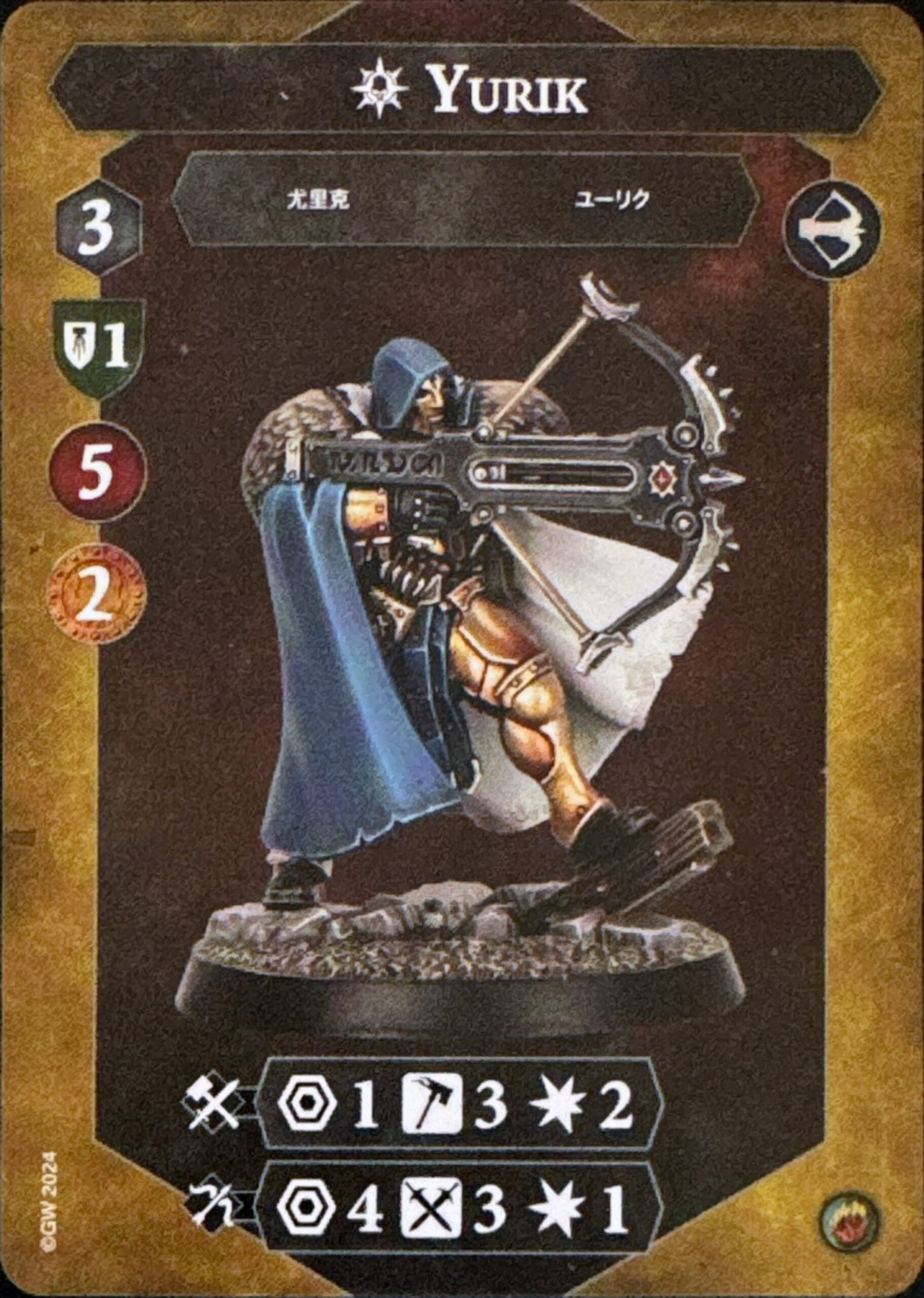
The final fighter in the warband is Yurik Velzaine. Keeping on theme, he also sports 3 Move, 1 Shield, and 5 Health with a 1R/2H/2D weapon and the last 2 Bounty in the warband. However, where he distinguishes himself is that he’s the “sniper” of the warband with a 4R/2H/1D weapon, which actually earns him the distinction of being the only fighter in the core set to hit from that range. While this offers him some unique positional capability, that’s about all you’ll get from him, as he is the only fighter in the warband not to add a die to his Save roll when he inspires and he (again) gets less accurate at range by swapping from 2H to 3S. He does still bounce up to 3H/2D on his Range 1, but overall I’d say he’s definitely the least critical of the three to inspire early, especially because his niche seems to be in popping those Range 4 shots.
Conclusion
I have to say, I feel like these guys are very much the inverse of their box counterparts. While the Tunnelpack seem to have some creative concepts and abilities, they fell a little short from a competitive lens, in my estimation. Conversely, the Emberwatch seem to be chock full of “boring” warscroll abilities at are quite potent. A teleport, +1 Range, a ping, and some free pushes on top of some solid bulk, range, and accuracy should make for a pretty legit competitive warband. They, unsurprisingly, seem to be very much in line with the Farstriders and I expect similar potency to what we saw towards the end of the first edition with them. You’ll likely see a good bit of ping control (gentle reminder that “Mastery” is not a playstyle) types of builds due to the low model count, but the avenues are certainly there for “Strike” or “Flex” strategies, with a preference for the latter given the warband’s range and positional tech. While I may be less personally invested in this warband, I think you Stomcast enjoyers out there seem to have bagged a good one in the Emberwatch.
That’ll wrap it up on this one, thanks very much for reading and we wish you all the best of luck on YOUR Path to (Sigmar’s) Glory!
